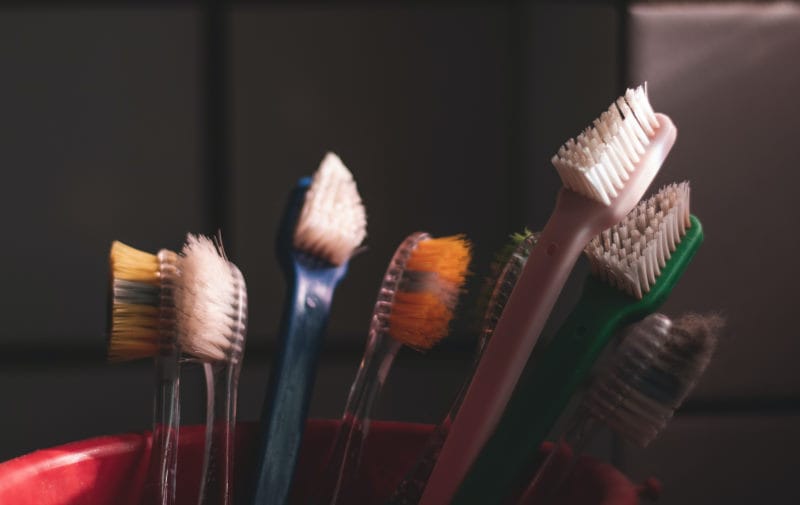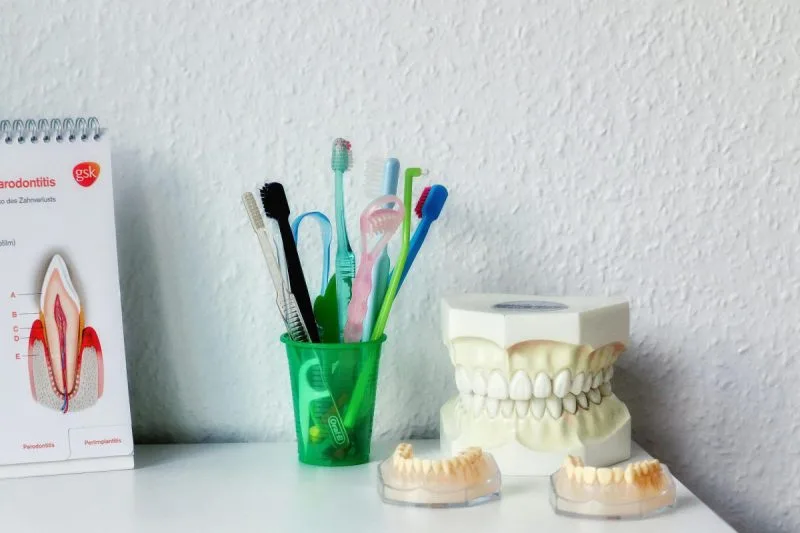Boiling your toothbrush used to be frequently recommended by dentists. However, times have changed and most now recommend replacing instead. But does the old advice still hold up and can you boil a toothbrush to kill bacteria?
Can You Boil Your Toothbrush?
Yes, you can boil your toothbrush safely to kill off any bacteria and sterilize it. It’s a fast and effective way of killing any bacteria hanging around without replacing a perfectly good brush. You only boil the head but the plastic is strong enough to withstand a few minutes of boiling.
You use your toothbrush every day (right?) to remove food debris, brush away plaque, and clean your tongue. Throughout the day you’ll have been exposed to whatever is in the air as well as other people’s breath. Your toothbrush is there to clean that all out, but what happens to the brush after?
Should I Boil My Toothbrush?
Boiling your toothbrush is one of the best ways to disinfect it and help keep your dental health in check. Not only does it sterilize the bristles, but it also gets rid of any grimy buildup that might be present. If you’re not sure how to boil your toothbrush correctly, don’t worry – we’ll provide instructions below!
There are a lot of different types of bacteria that can live on a toothbrush. Many of these bacteria come from your mouth, but others can be introduced to the bristles from other sources like a flushing toilet. Some research has found literally hundreds of different types of bacteria living on your average toothbrush.
Some of the most common types of bacteria that can live on a toothbrush include streptococcus mutans (strep throat), lactobacillus, actinomyces, as well as the E Coli bacteria and staphylococci – aka staph from staph infections.
When To Boil A Toothbrush
We recommend boiling your toothbrush every 2 to 3 months for general hygiene purposes. We also think you should disinfect your toothbrush by boiling it after you’ve had a cold or flu. If someone else in your house uses a toothbrush that touches yours, you should boil both of them.
When Should You Replace Your Toothbrush?
Experts in dental health recommend replacing your toothbrush every three to four months. If you have an electric toothbrush you should change to a new head every three to four months too. When the toothbrush looks unclean, discolored, or the bristles are splayed out too far you should also replace it.
If your toothbrush is moldy, you should clean it using our guide. However, boiling will do a similar job as long as you scrub it first.

How To Boil A Toothbrush
Boiling your toothbrush is a great way to kill off these harmful bacteria and keep your dental health in check! It also saves throwing away a toothbrush if the bristles are still straight. Here’s how to do it:
- Fill a small pot with two inches of water and bring to a boil
- Once it starts boiling, bring the heat down until it’s boiling but not bubbling over the sides
- Rest the toothbrush on the side with the head covered in the boiling water
- Allow the toothbrush to boil for three minutes, turn it if the plastic on the side is near to melting
- Remove the pot from the heat and allow it to cool for a few minutes before removing your toothbrush
- Rinse off your toothbrush with cold water and allow it to air dry
- Use this time to wash your toothbrush holder
- Don’t brush immediately! Make sure it’s totally cool before using it again
Can You Boil Electric Toothbrush Heads?
Yes, you can boil the head of an electric toothbrush but not the body. Just chuck the whole head in the pot using the same instructions as above. While you’re doing that, clean and then disinfect the body by using a bleach mix of 1 part bleach to 10 parts water, dabbing, and scrubbing with a cloth.
How Long To Boil A Toothbrush?
Three minutes in boiling water is plenty of time to boil a toothbrush. You could simmer it (just under boiling) for five minutes to do the same job.
Other Ways To Sterilize Your Toothbrush
You can also use one of the following methods to clean your toothbrush every couple of months if you’d prefer not to boil it: –
- Leave your toothbrush in antibacterial mouthwash overnight or stir the brush in a small cup of it for a minute. The mouthwash should contain 1-2% hydrogen peroxide
- Rinse or leave the brush in a 3% hydrogen peroxide solution for a few minutes. Rinse under hot water and leave to dry before brushing
- Mix a couple of teaspoons of baking soda into a cup of water and mix the brush up in the solution. Leave the solution for a few minutes overnight. Rinse under hot water and leave to dry before brushing
- You can also get the same effect from using an effervescent denture-cleaning tablet. Simply add a tablet to water, then leave the brush in head down overnight
How To Keep Your Toothbrush Clean
Outside of boiling it, there are a few things you can do on a daily basis to keep your toothbrush clean and hygienic. At the minimum, you should rinse the brush and keep it in its own pot or holder.
- Run your toothbrush under hot water – make sure your tap is running really hot first
- Use your finger to move the bristles about and help remove food debris, then flick the water out by running your finger across the bristles – DON’T dry it on a towel
- Have a cup filled with an inch of antibacterial mouthwash and leave the toothbrush dunked in it overnight. Change the mouthwash every night and don’t use it to swill.
- Don’t share a cup with other brushes, get a toothbrush holder
- Make sure the cup or holder is cleaned regularly
You can also buy UV light toothbrush sterilizers that hang on your wall or can be taken with you while traveling.
Does COVID Live On Toothbrushes?
A recent study concluded that high temperature can kill the coronavirus on objects. They concluded that “in order to kill COVID‐19, heat virus‐containing objects for” the following time periods. Sharing toothbrushes can also spread COVID according to a study.
- 3 minutes at a temperature above 75°C (160°F).
- 5 minutes for temperatures above 65°C (149°F).
- 20 minutes for temperatures above 60°C (140°F).
That means boiling your toothbrush in water for three minutes should cause complete deactivation of the virus. Water boils at 100°C or 212°F, so this is definitely hot enough to remove the majority of bacteria.
Should You Sterilize Or Change A Toothbrush After Strep Throat?
If you’ve had your toothbrush for a few months already, just go ahead and get a new one after being sick. If it’s an electric, change to a new head. You can sterilize the toothbrush instead and boiling for three minutes should kill basically all of the bacteria. It’s up to you how extreme you’d like to go.
Should I Boil My Toothbrush After Being Sick?
Yes, change your toothbrush or boil it after getting a coughing or sneezing illness. Strep throat, a sore throat, colds, and flu all come with this same advice. At minimum either boil or sterilize the toothbrush, but the preferred thing to do is just change it out.
Not keeping your toothbrush clean and hygienic is one of the reasons Why Teeth Can Go Yellow Even When You Brush Them Every Day – Make sure you need on top of your oral health by regularly changing or boiling your brush
Should Change Your Toothbrush After Covid?
Again, you should change your toothbrush after recovering from COVID. The virus lives in your nose and throat, as well as the lungs. That means even while recovering, you are essentially swabbing the infectious parts of your body with your toothbrush every day.
You can boil the toothbrush in water (properly boiling has long been known to kill viruses) but the best course of action is to change it after making a full recovery.
